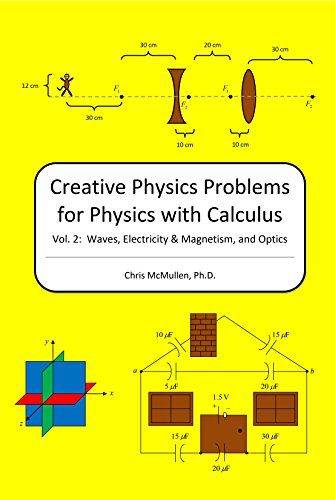-
Multiplication Practice with 10-20: Improve Your Math Fluency Worksheets
Chris McMullen
Paperback (Zishka Publishing, June 9, 2019)For students who have already learned to multiply 1 thru 9, these multiplication practice worksheets offer practice multiplying with 10 thru 20. (Students who need a quick review of the facts 1 thru 9 can find a quick review section towards the end of the book.) The answers to all of the exercises can be checked with a key at the back.
-
Creative Physics Problems: Waves, Electricity & Magnetism, And Optics
Chris McMullen
eBook (, Feb. 11, 2016)Originally designed as a paperback book (ISBN 1440458510), it's now available as an e-book in print replica format. Use pinch-and-zoom for a better view.This is book is a collection of creative physics problems. No examples or solutions are provided, as this volume of physics problems is intended to be used in conjunction with a textbook. Like textbook problems, answers to selected questions are provided. This can be useful for (i) teachers who are looking for engaging problems to assign or use as examples and (ii) diligent self-learners who are willing to work for the answer and possibly rework the problem a few times (which can be a rewarding strategy in the long run, but does not suit many of today's students who want the information simply injected into their brains). These imaginative problems are designed to: engage the interest of students in this difficult subject, add a little zest to abstract concepts like electric field, and challenge students to apply the concepts to involved problems. This includes artistically drawn circuits for capacitors or resistors, electricity problems where students are shrunk by a ray gun, visual problems for Lenz's law, and review problems grouped by a theme (such as one where the students are kidnapped by aliens). Involved problems are included to build fluency in the major problem-solving strategies, like superposition of electric fields, application of Kirchhoff's rules, and the strategy for solving problems with spherical mirrors and lenses. Many problems are broken down into parts to help guide students along - that is, you can check your answer to part (a) before moving onto part (b).
-
Pyramid Fractions - Fraction Basics Math Workbook: Least Common Denominator, Greatest Common Factor, Improper, Mixed, Reducing, Comparing & Reciprocals
Chris McMullen
Paperback (CreateSpace Independent Publishing Platform, Jan. 7, 2011)This colorful math book introduces a novel visual method for students to master their basic fraction skills. The creative design helps to engage student interest, while the visual layout ties into one of the current pedagogical drives in education – namely, to use visual strategies since research has shown them to be effective learning tools. These visual problems also help to develop visual skills. This volume focuses on basic fraction skills, including: • Converting between mixed numbers and improper fractions. • Finding the reciprocal of an improper fraction. • Determining the greatest common factor for two fractions. • Reducing fractions by cancelling the greatest common factor. • Determining the least common denominator for two fractions. • Comparing fractions by finding the least common denominator. • Adding and subtracting fractions. • Multiplying and dividing fractions. The back of the book features a table of answers to help students check that they are practicing correct techniques (or it may serve as a grading key for teachers or parents). The book begins with a concise explanation of the concepts with some examples to serve as a guide. The first page of each section includes annotated instructions that explain how to solve the problems. Studying these examples and checking the answers to the first page of each part will help students become confident that they understand what to do. The interior is printed in full color with aesthetic visual patterns. The 8” x 10” pages are nearly the same size as standard school papers that students are used to working with. Each problem includes its own dedicated workspace. The workspaces encourage students to show their work, and the symmetrical structure of the workspaces shows students how to organize their work in neat columns. The copyright notice permits parents/teachers who purchase one copy to make photocopies for their own children/students only. This is very convenient if you have multiple children/students or if a child/student needs additional practice. Teachers may also wish to display these colorful problems using a projective camera or a transparency overhead projector.
-
Changing Yesterday
Sean McMullen
eBook (Ford Street Publishing, July 1, 2011)It’s 1901, and Battle Commander Liore has travelled back in time to stop a war that will rage for over a hundred years. But time itself is against her. Whenever she changes history, a new beginning to the war emerges and the world once again teeters on the brink of disaster.To make matters worse, Barry the Bag has stolen Liore’s plasma rifle, the most dangerous weapon in the world. The owner is on his trail, and she doesn’t take prisoners. Can anything prevent Liore from risking the world’s future for the sake of revenge?
-
Why Do We Have to Go to School?
Chris McMullen
eBook (Topher Books, June 11, 2015)"Why Do We Have to Go to School?" is first and foremost an entertaining, stimulating discussion between a witty teenager and his father. A lively and fascinating debate evolves after the son asks, "Dad, why do we have to go to school?" The father discovers that this isn't such an easy question to answer, as the son turns out to be well-prepared with clever ideas. Still, the father rises to the challenge, coming up with a series of good responses.Just why do we have to go to school in this day and age where information is right at our fingertips?
-
Practice Arithmetic with Decimals Workbook: Improve Your Math Fluency Series
Chris McMullen
Paperback (CreateSpace Independent Publishing Platform, June 30, 2010)AUTHOR: Chris McMullen earned his Ph.D. in physics from Oklahoma State University and currently teaches physics at Northwestern State University of Louisiana. He developed the Improve Your Math Fluency series of workbooks to help students become more fluent in basic math skills.DESCRIPTION: This practice workbook is designed to help students develop proficiency in their arithmetic with decimals by offering ample practice. This book is conveniently divided up into five parts – one for addition, subtraction, and multiplication, and two levels of long division (one with and one without repeating decimals). In this way, students can focus on one arithmetic operation at a time.EXAMPLES: Each section begins with a concise set of instructions for how to add, subtract, multiply, or divide numbers with decimals, including a couple of examples.ANSWERS: Answers to exercises are tabulated at the back of the book. This helps students develop confidence and ensures that students practice correct techniques, rather than practice making mistakes.PHOTOCOPIES: The copyright notice permits parents/teachers who purchase one copy or borrow one copy from a library to make photocopies for their own children/students only. This is very convenient if you have multiple children/students or if a child/student needs additional practice.INTRODUCTION: An introduction describes how parents and teachers can help students make the most of this workbook. Students are encouraged to time and score each page. In this way, they can try to have fun improving on their records, which can help lend them confidence in their math skills.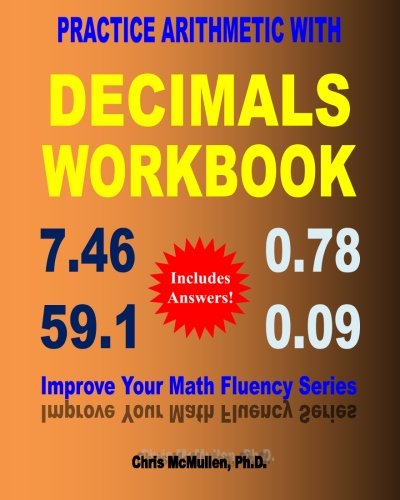 T
T
-
Creative Physics Problems for Physics with Calculus: Mechanics
Chris McMullen
eBook (, Sept. 14, 2016)Originally designed as a paperback book (ISBN 1442188219), it's now available as an e-book in print replica format. Use pinch-and-zoom for a better view.This is book is a collection of creative physics problems, which includes a healthy dose of calculus-based problems. No examples or solutions are provided, as this volume of physics problems is intended to be used in conjunction with a textbook. Like textbook problems, answers to selected questions are provided. This can be useful for (i) teachers who are looking for engaging problems to assign or use as examples and (ii) diligent self-learners who are willing to work for the answer and possibly rework the problem a few times (which can be a rewarding strategy in the long run, but does not suit many of today’s students who want the information simply injected into their brains).These imaginative problems are designed to: engage the interest of students in this difficult subject, add a little zest to abstract concepts like angular momentum, challenge students to apply the concepts to involved problems, and encourage students to develop and apply their calculus skills. This includes many instructive problems that force students to think through key concepts (like collisions where students calculate the lost mechanical energy), problems with conceptual questions (e.g. why a ball actually rolls farther up an incline in the presence of friction than it does sliding without friction), calculus-based problems (such as motion, center of mass, and moment of inertia),and review problems grouped by a theme (such as one about a chimp who stole physics à la the Grinch). Involved problems are included to build fluency in the major problem-solving strategies, like combining conservation of energy and momentum. Many problems are broken down into parts to help guide students along – that is, you can check your answer to part (a) before moving onto part (b).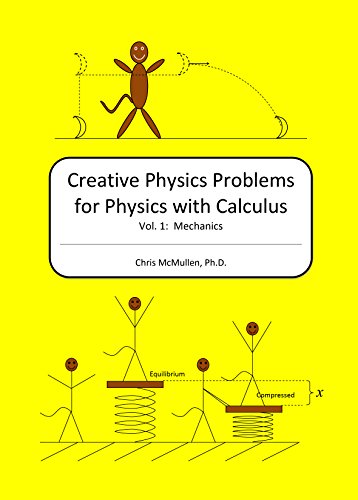
-
Subtraction Facts Practice Book: Improve Your Math Fluency Series
Chris McMullen
Paperback (CreateSpace Independent Publishing Platform, June 17, 2009)Same book, new look! Cover updated in July, 2014.AUTHOR: Chris McMullen earned his Ph.D. in physics from Oklahoma State University and currently teaches physics at Northwestern State University of Louisiana. He developed the Improve Your Math Fluency series of workbooks to help students become more fluent in basic math skills.CONTENTS: This practice book is designed to help students first memorize and then develop fluency with their basic subtraction facts – i.e. subtracting numbers where the minuend and difference are between 0 and 10. This book is conveniently divided up into four parts:Part 1 features a single number so that students can master one number's subtraction facts at a time.Each problem in Part 2 has a has a subtrahend that is no larger than 9, allowing students to concentrate on smaller numbers first.Similarly, the problems of Part 3 have a subtrahend larger than 9.Part 4 is a mixture of Parts 2 and 3 combined together.An introduction describes how parents and teachers can help students make the most of this workbook.An addition table is provided to help students who are just learning their subtraction facts. PRACTICE: This is a practice workbook geared toward practicing problem-solving skills. As such, it consists of worksheets with practice problems in the spirit of old-fashioned practice sheets. This is suitable for students who need to practice basic skills, and is effective for many students. It is not one of the modern math textbooks that are designed to entertain bored students.PHOTOCOPIES: The copyright notice permits parents/teachers who purchase one copy or borrow one copy from a library to make photocopies for their own children/students only. This is very convenient if you have multiple children/students or if a child/student needs additional practice.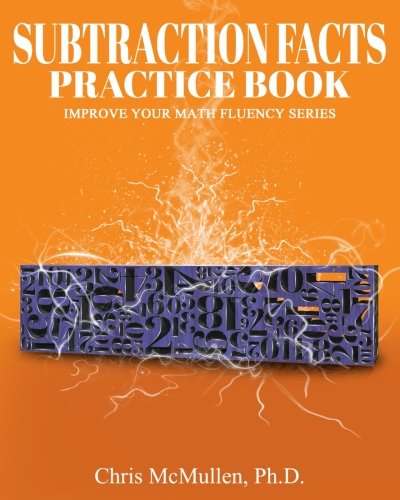 M
M
-
100 Instructive Trig-based Physics Examples: Electricity and Magnetism
Chris McMullen
Paperback (Zishka Publishing, May 17, 2017)DESCRIPTION:over 100 fully-solved examplesstep-by-step solutions with explanationsstandard problems from trig-based physicsincludes tables of equations, symbols, and unitsThis volume covers electricity and magnetism, including electric field, Gauss's law, electric potential, capacitance, resistance, Kirchhoff's rules, RC Circuits, right-hand rules, magnetic field, Ampere's law, Faraday's law, Lenz's law, inductance, AC circuits, and more. (Vol. 2 covers electricity and magnetism, while Vol. 3 covers waves, fluids, heat, sound, and light. Vol.'s 2-3 will be released in the spring of 2017.)AUTHOR: The author, Dr. Chris McMullen, has over 20 years of experience teaching university physics in California, Oklahoma, Pennsylvania, and Louisiana (and has also taught physics to gifted high school students). Dr. McMullen currently teaches physics at Northwestern State University of Louisiana. He has also published a half-dozen papers on the collider phenomenology of superstring-inspired large extra dimensions. Chris McMullen earned his Ph.D. in particle physics from Oklahoma State University (and his M.S. in physics from California State University, Northridge).Dr. McMullen is well-known for:engaging physics students in challenging ideas through creativitybreaking difficult problems down into manageable stepsproviding clear and convincing explanations to subtle issueshis mastery of physics and strong background in mathematicshelping students become more fluent in practical math skillsUSES: This physics book serves two functions:It provides a variety of examples for how to solve fundamental physics problems.It's also the solutions manual to Essential Trig-based Physics Study Guide Workbook, ISBN 978-1-941691-10-6.
-
Pyramid Fractions, Decimals, & Percents – Fraction Basics Math Workbook: Converting Between Fractions, Decimals, and Percentages
Chris McMullen
Paperback (CreateSpace Independent Publishing Platform, Jan. 27, 2011)This colorful math book introduces a novel visual method for students to master their conversions between fractions, decimals, and percentages. The creative design helps to engage student interest, while the visual layout ties into one of the current pedagogical drives in education – namely, to use visual strategies since research has shown them to be effective learning tools. These visual problems also help to develop visual skills. This volume focuses on the following basic skills: • Converting from fractions to decimals and percents. • Converting from decimals to fractions and percents. • Converting from percents to fractions and decimals. • Converting fractions into repeating decimals and percents. • Converting repeating decimals into fractions and percents. The back of the book features a table of answers to help students check that they are practicing correct techniques (or it may serve as a grading key for teachers or parents). The book begins with a concise explanation of the concepts with some examples to serve as a guide. The first page of each section includes annotated instructions that explain how to solve the problems. Studying the examples and checking the answers to the first page of each part will help students become confident that they understand what to do. The interior is printed in full color with aesthetic visual patterns. The 8” x 10” pages are nearly the same size as standard school papers that students are used to working with. Each problem includes its own dedicated workspace. The workspaces encourage students to show their work, and the symmetrical structure of the workspaces shows students how to organize their work in neat columns. The copyright notice permits parents/teachers who purchase one copy to make photocopies for their own children/students only. This is very convenient if you have multiple children/students or if a child/student needs additional practice. Teachers may also wish to display these colorful problems using a projective camera or a transparency overhead projector.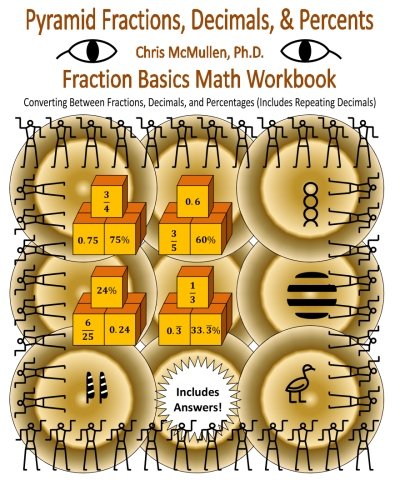 R
R
-
Creative Physics Problems: Mechanics
Chris McMullen
Paperback (CreateSpace Independent Publishing Platform, June 1, 2009)This is book is a collection of creative physics problems. No examples or solutions are provided, as this volume of physics problems is intended to be used in conjunction with a textbook. Like textbook problems, answers to selected questions are provided. This can be useful for (i) teachers who are looking for engaging problems to assign or use as examples and (ii) diligent self-learners who are willing to work for the answer and possibly rework the problem a few times (which can be a rewarding strategy in the long run, but does not suit many of today’s students who want the information simply injected into their brains). These imaginative problems are designed to: engage the interest of students in this difficult subject, add a little zest to abstract concepts like angular momentum, and challenge students to apply the concepts to involved problems. This includes many instructive problems that force students to think through key concepts (like collisions where students calculate the lost mechanical energy), problems with conceptual questions (e.g. why a ball actually rolls farther up an incline in the presence of friction than it does sliding without friction), and review problems grouped by a theme (such as one about a chimp who stole physics à la the Grinch). Involved problems are included to build fluency in the major problem-solving strategies, like combining conservation of energy and momentum. Many problems are broken down into parts to help guide students along – that is, you can check your answer to part (a) before moving onto part (b).
-
Creative Physics Problems for Physics with Calculus: Waves, Electricity & Magnetism, and Optics
Chris McMullen
language (, Sept. 12, 2017)Originally designed as a paperback book (ISBN 1440461570), it's now available as an e-book in print replica format. Use pinch-and-zoom for a better view.This is book is a collection of creative physics problems, which includes a healthy dose of calculus-based problems. No examples or solutions are provided, as this volume of physics problems is intended to be used in conjunction with a textbook. Like textbook problems, answers to selected questions are provided. This can be useful for (i) teachers who are looking for engaging problems to assign or use as examples and (ii) diligent self-learners who are willing to work for the answer and possibly rework the problem a few times (which can be a rewarding strategy in the long run, but does not suit many of today’s students who want the information simply injected into their brains). These imaginative problems are designed to: engage the interest of students in this difficult subject, add a little zest to abstract concepts like electric field, challenge students to apply the concepts to involved problems, and encourage students to develop and apply their calculus skills. This includes artistically drawn circuits for capacitors or resistors, electricity problems where students are shrunk by a ray gun, visual problems for Lenz's law, and review problems grouped by a theme (such as one where the students are kidnapped by aliens). Involved problems are included to build fluency in the major problem-solving strategies, like superposition of electric fields, application of Gauss's and Ampere's laws, and the strategy for solving problems with spherical mirrors and lenses. Many problems are broken down into parts to help guide students along – that is, you can check your answer to part (a) before moving onto part (b).